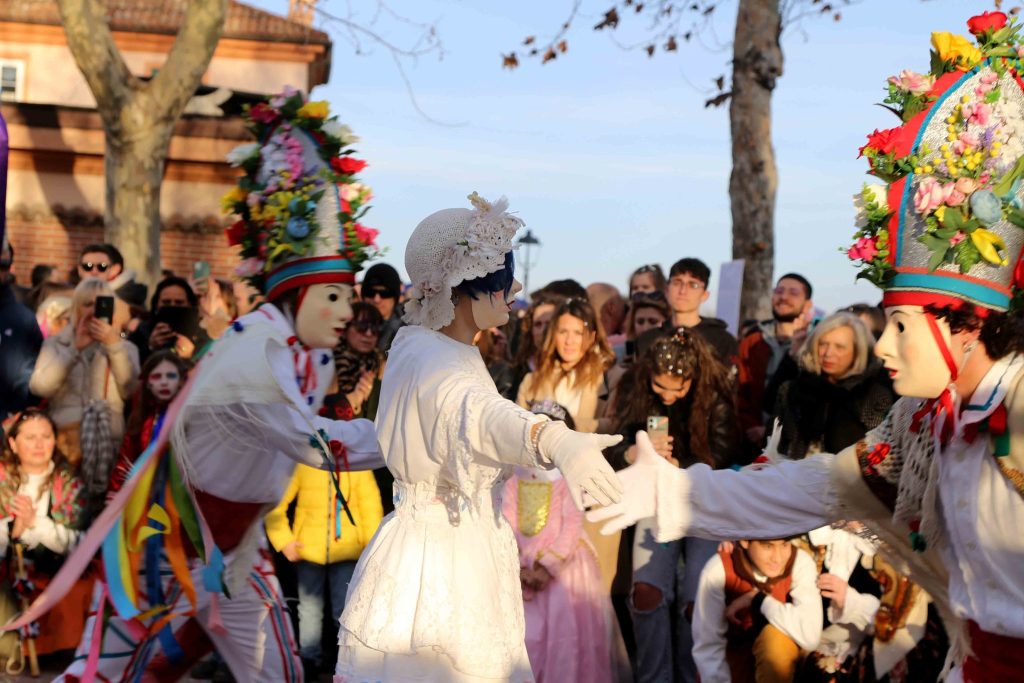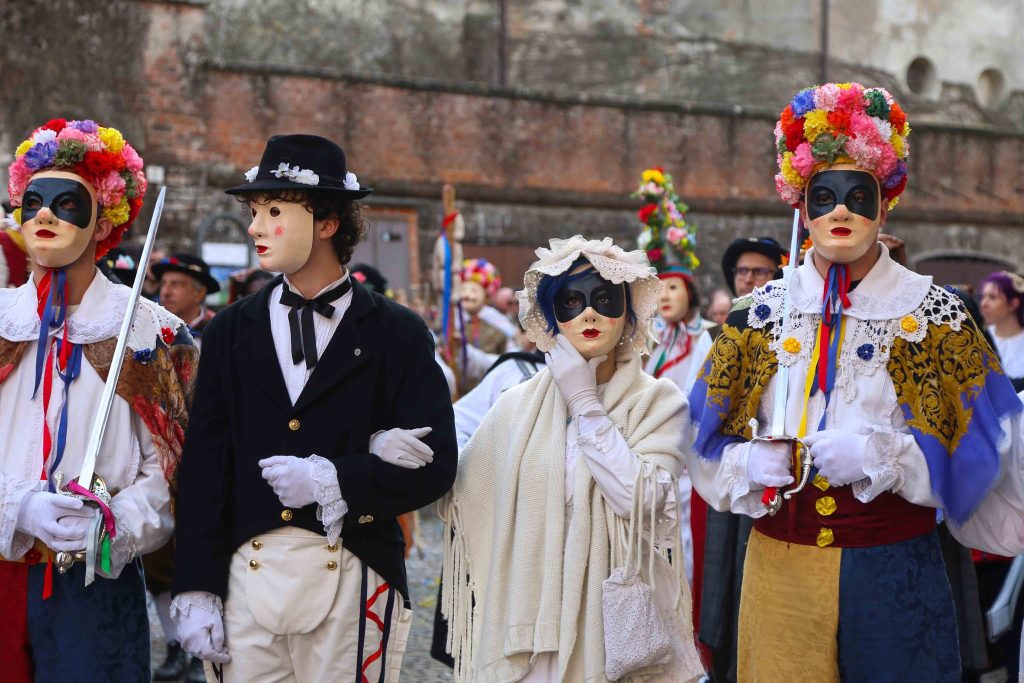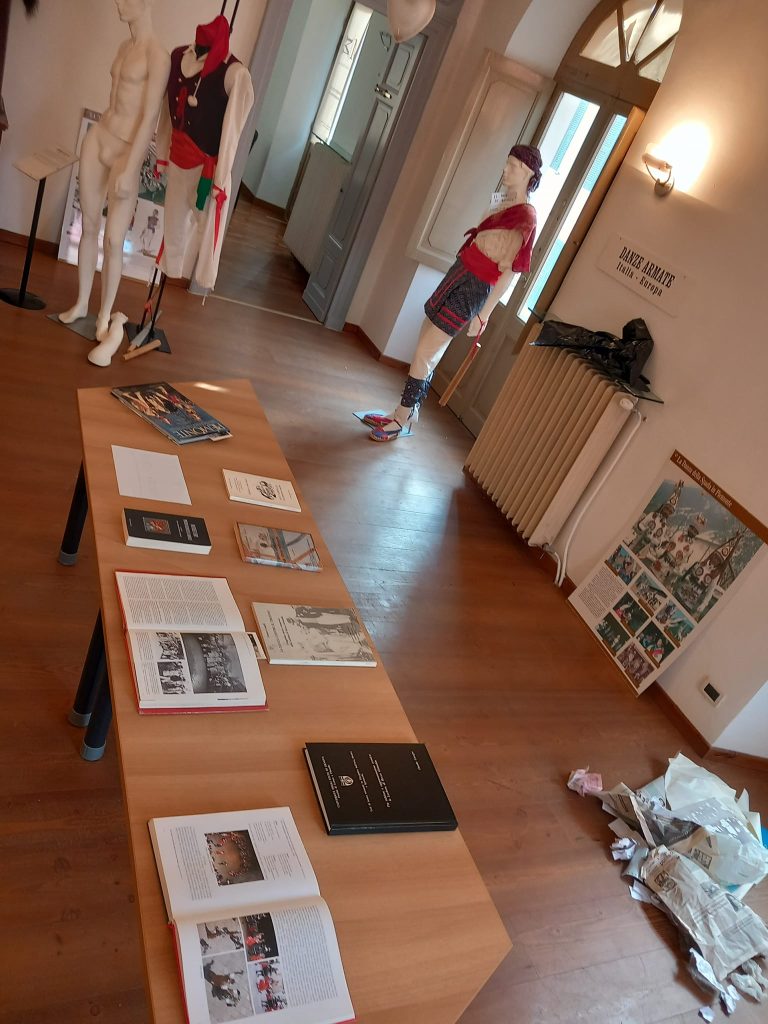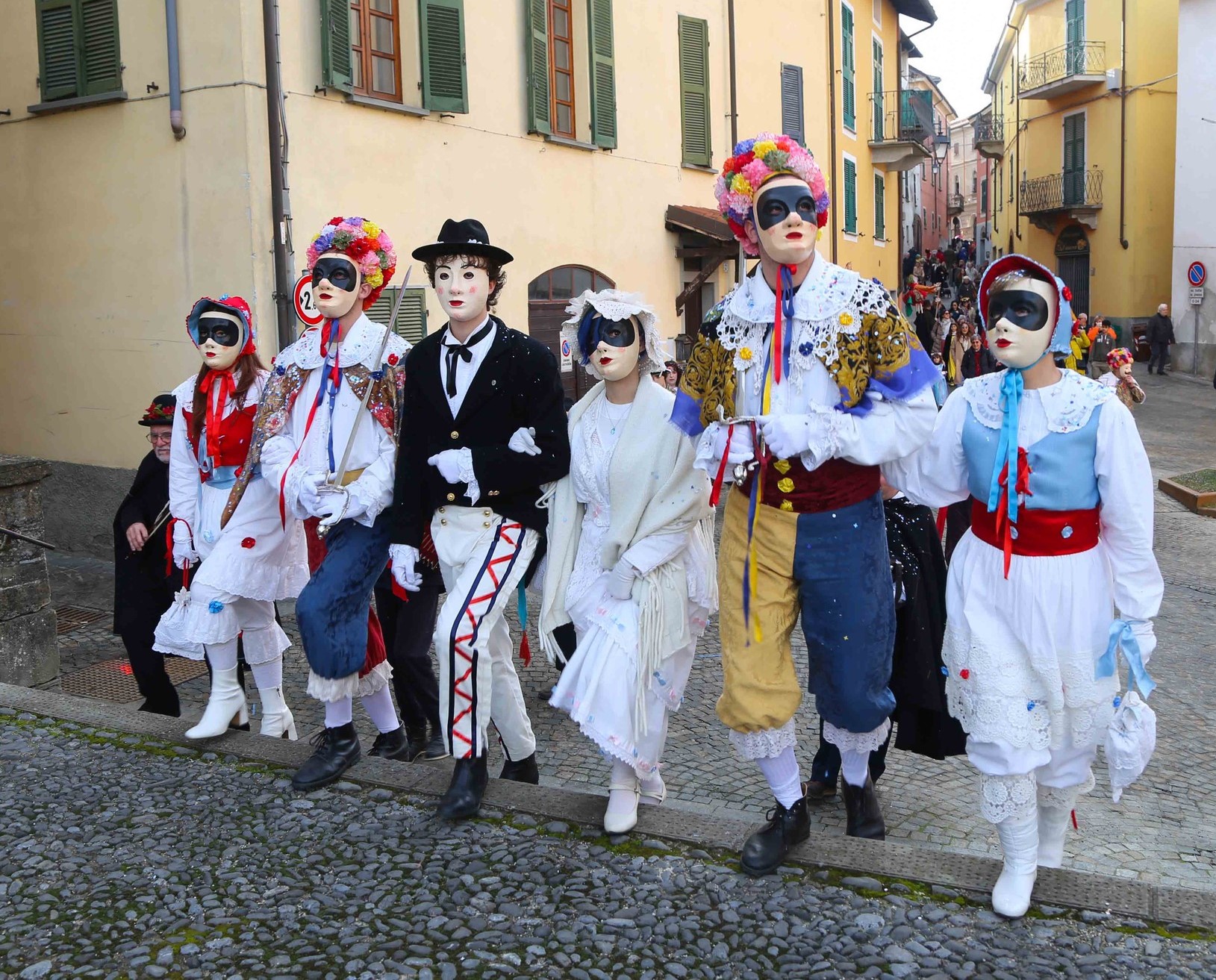Lachera is the traditional carnival of Rocca Grimalda (Alexandria), a set of dances, rites and theatrical performances. Its origin can be traced back to the revolt of the local population against the Lord of the town who claimed to exercise the Jus Primae Noctis over the brides of the fiefdom. But it also originates, if not above all, from the ancient spring propitiatory rites. The representation is a lively and colorful wedding procession characterized by a crescendo of sounds, clicks, tinkling of bells, swirling of flowers and colored ribbons.

The procession of the bride and groom and the lackeys
The Lachera is animated by the spouses and the Lachè, the servants with long flowered hats similar to bishop's mitres. There are also other curious and folkloristic characters. They are represented by Trapulin, a sort of Harlequins equipped with whips and rattles; The Zouaves equipped with swords and accompanied by dancers; The Black warrior, which represents evil or winter now defeated; The Baby, a sort of devil with goat horns who corrupts and harasses the girls present at the party. The procession of the bride and groom ends with Country women and muleteers.

The first were introduced in the carnival in the fascist era; the latter remember the carters who transported the wine, a precious product of these lands. Everyone dances around the bride and groom. Once the procession is over, the participants go to the town's Belvedere for the burning of the Carvà, or the puppet that represents Carnival.

The Mask Museum
The Lachera costumes can be admired inside the exhibition rooms of the Mask Museum of Rocca Grimalda. It was born in 2000 on the initiative of a group of scholars belonging to the Ethno-Anthropological Laboratory, active in the area since 1996. It is dedicated to currently practiced European calendar ritual traditions.

The masks present recurring elements used to chase away evil spirits and propitiate the arrival of the beautiful season and the awakening of the earth. The museum welcomes zoomorphic masks (bear, goat, deer), armed dances (related to the struggle between good and evil), agrarian and spring propitiatory dances (they are often represented during the carnival period to exorcise winter and propitiate spring).

Il Ethno-Anthropological Laboratory and the Mask Museum have managed to make the small village a center of cultural development capable of communicating with Italian and European institutions attentive to the study of popular customs. The Mask Museum houses carnival costumes from the most important and ancient traditional carnivals still kept alive today in various Italian and European contexts. Rocca Bernarda is a village absolutely worth visiting, both during the Carnival period and throughout the year, because it is rich in history, monuments and fascinating places.
(Photo: La Lachera, Facebook Group)





